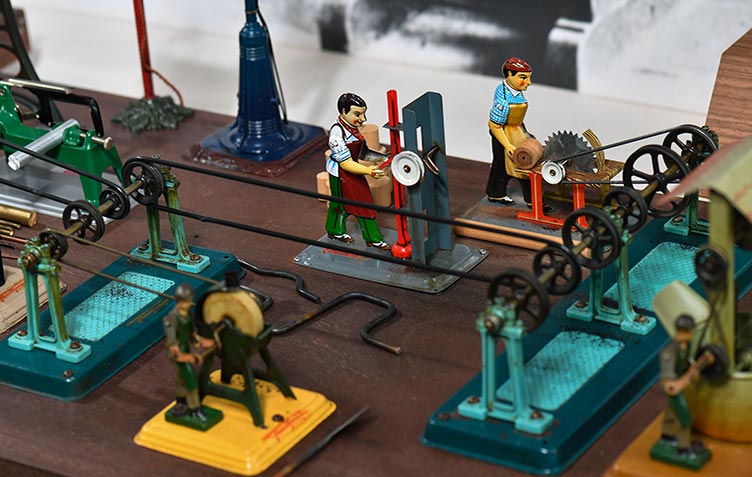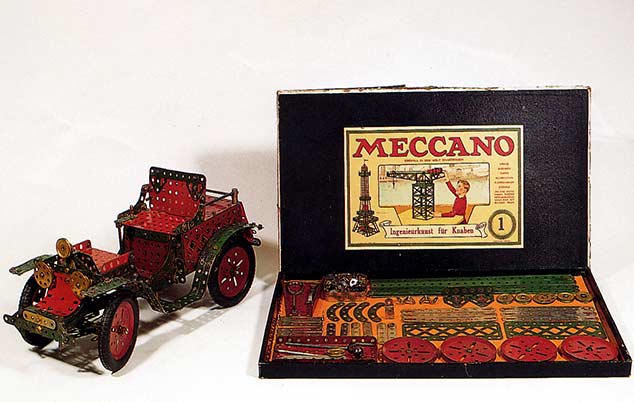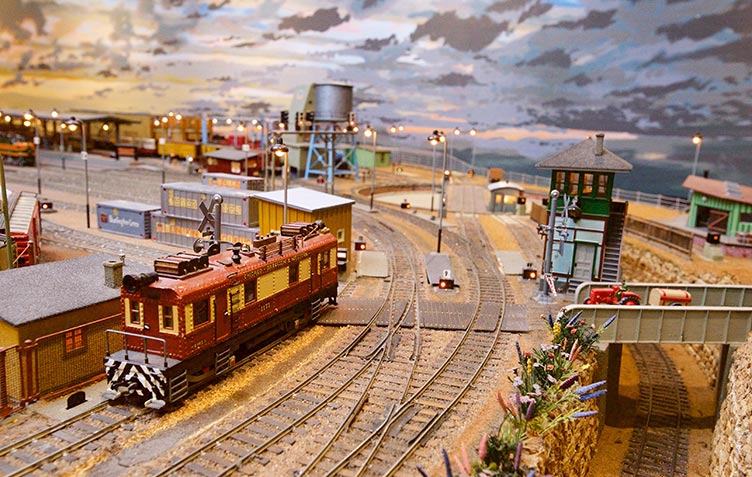
Technology and work
Right from the start, technical achievements like the steam engine, railroad, cinema, telephone, automobile and airplane were so fascinating to both children and adults that toy versions appeared almost instantly as well. In an era that believed in progress, even children – especially boys – were expected to prepare themselves for the future by getting acquainted with modern technology through play.
The toys of this new era were made of iron, the core material of industrialization; clockwork mechanisms set them in motion. Whether simple "penny toys," solid metal construction sets, dancing figurines, or working models of steam engines and model trains, the result was an entire world made of sheet metal. And for a century, Nuremberg was that world’s capital. Around 1910, some 5000 people worked here at more than 100 companies in the industry, including such resonant names as Issmayer, Hess, Bub, Carette, Fleischmann, Plank, Doll and especially Bing, the world's biggest toy manufacturer of its day.
In contrast to toys made in Nuremberg, a large group of toys made by Louis Marx & Co. illustrate the American approach to metal toys. The picture is filled out by Japanese tin cars from the 1950s.

Metal Construction Sets
Metal construction sets were among the twentieth century's most popular toys for boys. Sets from Meccano, Walther Stabil, Märklin and Trix taught innumerable budding engineers the basic concepts of technology. An attractively designed display unit with pull-out compartments presents a wealth of wonderful sets and beautiful models from these four major companies in just a small space.

The Omaha Model Train Layout
The reproduction of the American rail hub in Omaha, Nebraska, covering almost 30 square meters, is built to a special scale (1:64, S gauge). Without ever having been there, its maker, Nuremberg geologist Dr. Wolfram Bismarck, lovingly built by hand from 1950 to 1974 an incredibly detailed layout based on the rail yard's actual operations.
This masterpiece of model building was the inspiration for a very special film portrait, "Omaha in Nuremberg." In a special screening room right next to the layout, this multi-award-winning film takes visitors on a journey into a railway world where the barriers between model and reality seem to fade away.
Regular demonstrations, which always attracted enthusiastic audiences, had to be discontinued in 2005 after the system's operator for many years died. Luckily, a volunteer successor has now been found, Mr. Ulrich Friedhoff, to show off the layout again in action. Demonstrations are generally held on the last Saturday afternoon of the month, every 45 minutes starting at 3.


